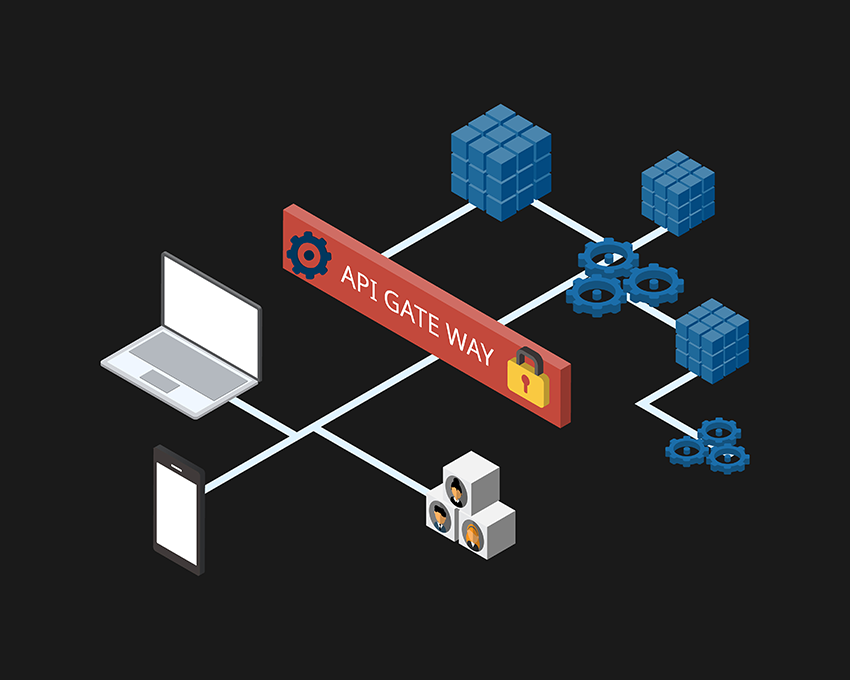Application Programming Interfaces (APIs) are the driving force of today's IT ecosystem. When implemented appropriately, they can facilitate better efficiency and connectivity, reduce cost and time to market, and ultimately boost revenue. In essence, they serve as the connecting thread that enables businesses to monetize API data, cultivate profitable partnerships, and find new ways to grow and innovate.
In recent years, there’s been high adoption of APIs due to the potential number of services they can offer. These services may include facilitating content delivery across web pages, enabling financial and health services, and more.
According to Postman’s State of APIs report, 94% of respondents indicate that they will continue to invest time and resources into APIs in the coming year. In light of that, API gateways are essential to API management as they perform several functions such as authentication, rate limiting, analytics, and usage management.
In this article, you’ll learn about API gateways and why they’re crucial to enterprises.
What Is an API Gateway
An API gateway serves as a bridge between API endpoints and backend services to route client requests to the appropriate application services. It was designed originally to support microservices architecture. Its primary role is to act as a single entry point to standardize and support interactions between an enterprise’s apps, services, and data for internal and external users.
The Role of API Gateways In API Management
API gateway represents a vital part of the API management system. They process incoming requests and route them through the API management system responsible for handling various tasks. Essentially, they enable uniform capabilities through API discovery, monitoring, versioning, security, and more.
Instead of re-inventing the wheel and creating a new API gateway for every API, you have just one. API gateways do a variety of things, depending on their implementation. Some of the functions that API gateway performs include:
- Authentication and policy enforcement
- Protocol translation
- Routing
- Rate limiting
- service discovery
- cache management
- Load balancing
- Analytics
- Monitoring and logging
Why Do You Need an API Gateway?
Beyond the roles that they play in API management, API gateways offer the following enterprises uses:
Streamlines services delivery: API gateways allow you to combine several API calls to access data and services, which reduces the number of requests and traffic. As a result, the API process becomes more efficient and helps improve your app's user experience. For instance, you can build GraphQL API gateways to combine all services such as content or product information in a single request. For example, a headless CMS like Crafter CMS plugs seamlessly into API gateways. With a single schema and data source across all your microservices, you can query multiple fields without having to know the source of the data.
Ensures flexibility: API gateways can be tailored to meet specific needs. A developer can wrap an application's internal structure in multiple ways, invoking several backend services and aggregating the results.
Extends the life cycle of legacy applications: API gateways enable businesses reliant on legacy applications to integrate with those apps and enhance their functionalities instead of undertaking a more complex (and expensive) migration.
Tracks and monitor APIs: Most organizations monitor activity through APIs with specific tools, but an API gateway can help with this task. Logs from API gateways can help identify issues during failures.
Decoupling: If your clients communicate directly with multiple services that you can't control, moving or renaming those services can be very challenging since the clients rely on the underlying infrastructure. With API gateways, you can route based on hostname, path, headers, and other factors, making it possible to decouple publicly accessible API endpoints from the underlying microservices.
Security: API gateways can act as a central proxy server to manage rate limiting, authentication, bot detection, and CORS.
Considerations When Evaluating API Gateways
Every enterprise needs to make a few considerations when building an API gateway:
- Customization: Some API gateways may offer more customization options, such as open-source solutions requiring internal expertise. Some API gateways rely on different programming languages. Be sure that your IT staff has the skills to deal with these requirements. They may include DevOps skills, programming, or content management. Plugins can partially alleviate this issue.
- Open source versus proprietary software: Choosing between an open-source or proprietary software is one of the most crucial decisions to make when choosing an API gateway. Would you like to extend the gateway functionalities? Are plugins available? Are they open source? You may find an open-source solution a more suitable choice for more customization options.
- API architecture: An API gateway can be either simple or complex and extensible. Many of these applications also support several database systems, such as MongoDB, PostgreSQL, Redis, Cassandra, or MongoDB. Some vendors that you’re already familiar with may offer API gateways.
- Deployment complexity: Can the gateway be deployed on a single node appliance or would you need to deploy multiple types of nodes to set up the database? Some gateways require multiple database types.
Read more: API Security Maturity Model: How to Evaluate The Security of Your API
How API Gateways Facilitate Better Content Experiences
In agile and DevOps enterprises, developers rapidly and continuously build and deploy applications using microservices. APIs facilitate cloud development, serverless architecture, and microservices communication. API gateways help to manage and deploy these functions successfully.
Content-driven businesses can leverage GraphQL API gateways to manage requests and deliver content across multiple channels. A better approach for content-rich experiences is DevContentOps. This is an extension of the DevOps approach by considering the needs of content teams, and by integrating processes and tools among developers, ops, and the content authors. The result is a better developer and marketer-friendly architecture and more efficient content and code delivery.

 Alexander Fashakin
Alexander Fashakin




